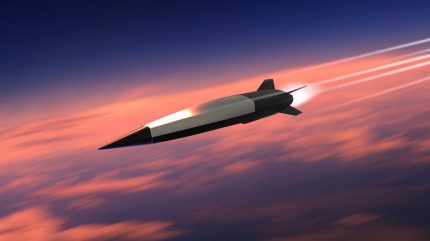
The US Air Force (USAF) has awarded Raytheon, a subsidiary of the US defence prime RTX, a $73m deal to enhance its manufacturing capacity to produce the Hypersonic Attack Cruise Missile (HACM).
These funds come under the aegis of the ‘Eglin Wide Agile Acquisition Contract’ (EWAAC). This funding mechanism mobilises $46bn for the Air Force Life Cycle Management Center based at Eglin Air Force Base over a ten-year period concluding in September 2031.
‘Hypersonic’ refers to aerial objects—including aircraft, missiles, rockets, and spacecraft—that can reach speeds through the atmosphere greater than Mach 5, which is nearly 4,000 miles per hour (6,437 km/h). A fully fledged hypersonic capability factors in manoeuvrability at such excessive speeds.
EWAAC and HACM
Through EWAAC, the USAF intends to support the rapid development and acquisition of novel weapons technologies, systems concepts, and capabilities across all phases of the weapons lifecycle. Task orders under this vehicle cover a wide range of activities including research and development, engineering, testing, production, sustainment, and modernisation of weapons systems.
HACM is one emerging technology programme under the auspices of EWAAC. Raytheon designed HACM, which leverages Northrop Grumman scramjet propulsion, to travel at hypersonic speeds and cover vast distances in minutes.
The USAF claim it plans for the missile to be operational by Fiscal Year 2027.

US Tariffs are shifting - will you react or anticipate?
Don’t let policy changes catch you off guard. Stay proactive with real-time data and expert analysis.
By GlobalDataThis industrial partnership started in 2013 and resulted in a 2019 teaming agreement to develop, produce and integrate Northrop Grumman’s scramjet engines and boosters onto RTX’s air-breathing hypersonic weapons, which led to the Hypersonic Air-breathing Weapon Concept.
Scramjet capability
The re-emergence of strategic great power competition has spurred investment in the field of hypersonic weapons technology due to its potential applications in deterrence and military operations.
HACM is a leading hypersonic programme that will provide the USAF with a ‘hypersonic’ capability in the strict sense of the term in contrast to the embryonic stage of existing hypersonics such as the Russian Zircon missile.
“The Russians initially claimed the Zircon had an operational scramjet,” noted William Freer, a research fellow in national security, Council of Geostrategy, though “subsequent evidence from wreckage of Zircon missiles in Ukraine shows that this claim was false, it uses a ramjet engine.”
Nevertheless, Northrup Grumman’s scramjet will soon power the Raytheon missile in the coming years.
Scramjets have been studied since the late 1950s, with few sustained flight successes. They are essentially supersonic ramjet engines and require high vehicle speed – provided by a rocket booster or supersonic aircraft – to compress air through an inlet into a combustion chamber.
“It’s more complicated than a typical solid rocket motor, but much less than the turbine engines on some cruise missiles and jets.
“There are almost no moving parts inside the engine. It’s all about the design to manage the aerodynamic forces involved.”



